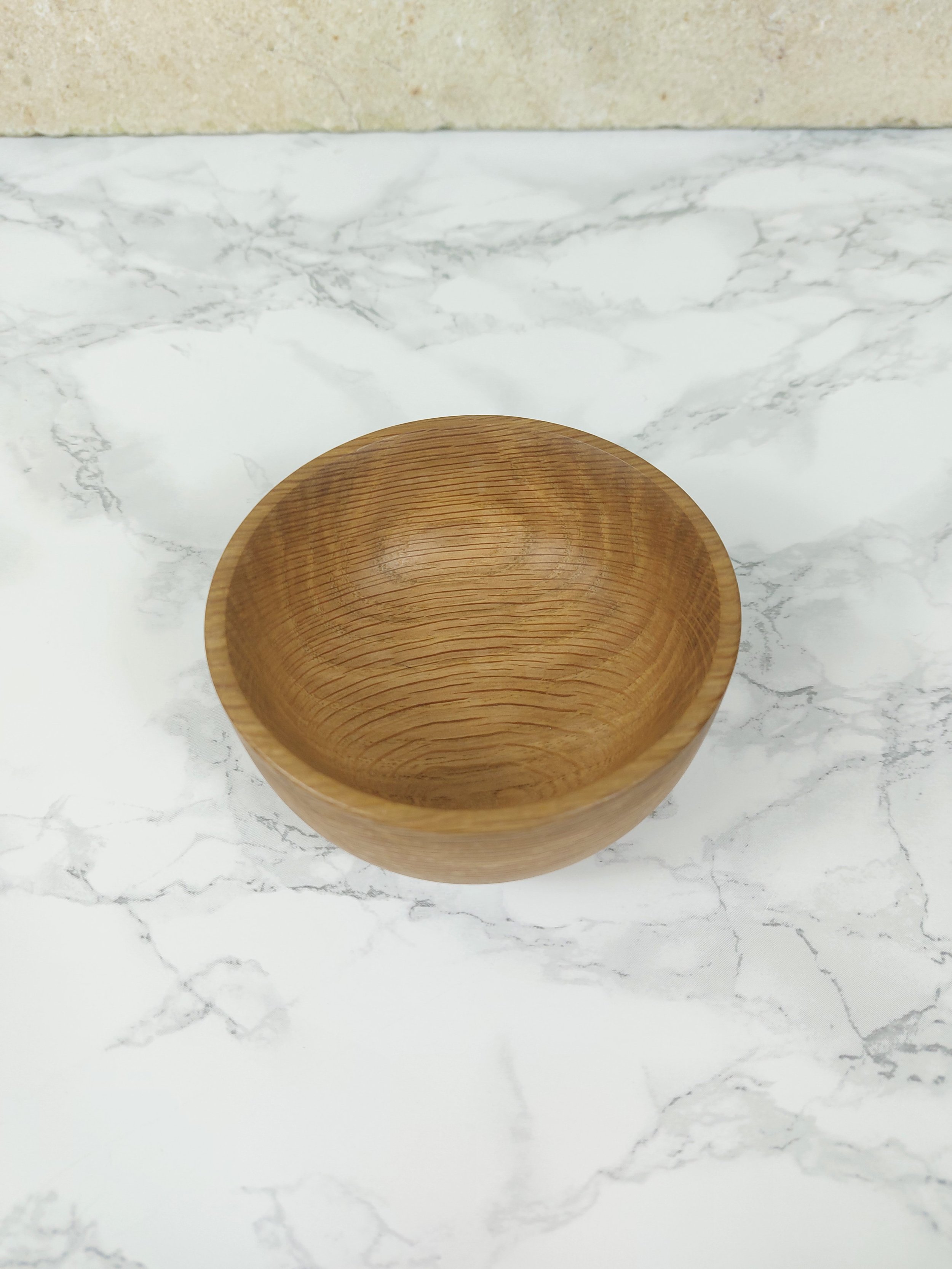The Trencher
The Trencher was a medieval plate. The smaller offset ‘dish’ was used for salt or rare spices. At the time salt was a commodity and the phrase ‘worth your salt’ comes from when the lord of a manor would dish out the salt to his workers. The size of the pile in the smaller recess would be easily seen.
The traditional style was a flat board with the recesses carved and/or turned in. Our design is based on one found on Henry VIII’s ill fated flagship the Mary Rose. We have added a curve around the edge to make it easier to pick up.
approximately 10inches (250mm) square and 1 inch (25mm) thick. The dished eating area is approximately 8 inches (200mm) in diameter and 1/2 inch (12mm) deep
As a natural product no two pieces of wood are the same. Consequently the grain and possible knots will vary from the images shown
Not suitable for dishwashers or microwaves and don’t submerge in water. To clean, wipe with a damp cloth and a mild detergent if necessary. Dry straight away.
The Trencher was a medieval plate. The smaller offset ‘dish’ was used for salt or rare spices. At the time salt was a commodity and the phrase ‘worth your salt’ comes from when the lord of a manor would dish out the salt to his workers. The size of the pile in the smaller recess would be easily seen.
The traditional style was a flat board with the recesses carved and/or turned in. Our design is based on one found on Henry VIII’s ill fated flagship the Mary Rose. We have added a curve around the edge to make it easier to pick up.
approximately 10inches (250mm) square and 1 inch (25mm) thick. The dished eating area is approximately 8 inches (200mm) in diameter and 1/2 inch (12mm) deep
As a natural product no two pieces of wood are the same. Consequently the grain and possible knots will vary from the images shown
Not suitable for dishwashers or microwaves and don’t submerge in water. To clean, wipe with a damp cloth and a mild detergent if necessary. Dry straight away.
The Trencher was a medieval plate. The smaller offset ‘dish’ was used for salt or rare spices. At the time salt was a commodity and the phrase ‘worth your salt’ comes from when the lord of a manor would dish out the salt to his workers. The size of the pile in the smaller recess would be easily seen.
The traditional style was a flat board with the recesses carved and/or turned in. Our design is based on one found on Henry VIII’s ill fated flagship the Mary Rose. We have added a curve around the edge to make it easier to pick up.
approximately 10inches (250mm) square and 1 inch (25mm) thick. The dished eating area is approximately 8 inches (200mm) in diameter and 1/2 inch (12mm) deep
As a natural product no two pieces of wood are the same. Consequently the grain and possible knots will vary from the images shown
Not suitable for dishwashers or microwaves and don’t submerge in water. To clean, wipe with a damp cloth and a mild detergent if necessary. Dry straight away.





